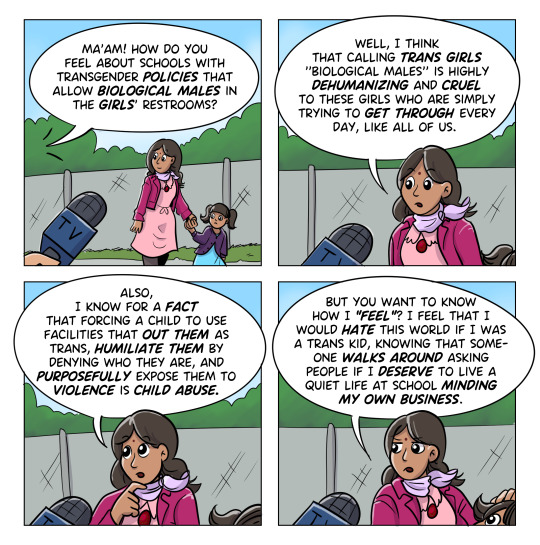Text
i open the lesbian tag. i see 20 posts about gold star lesbians in a row. i close the lesbian tag
8K notes
·
View notes
Text
I had an interview with a local paper this week about this rock snake I started on the longest street of a nearby city (where I work) because it's bringing people so much joy:
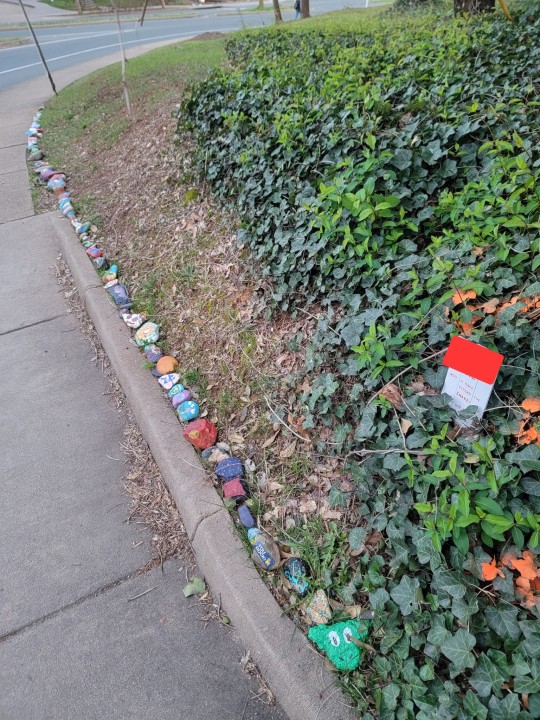
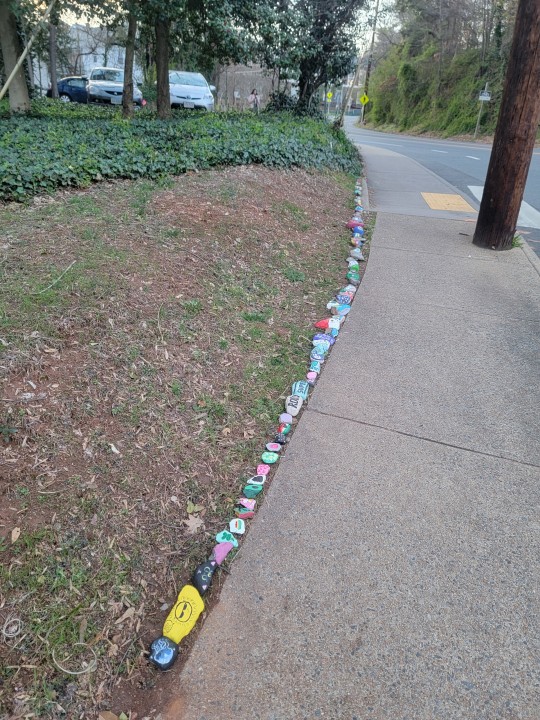
I said something during the interview that the interviewer seemed really shocked by, so in case it's important for anyone else to hear: When asked about the rock snake and some scavenger hunts that I've hosted for adults, I said -
"We don't stop enjoying the things we liked as kids; they just stop being offered to us. And when you're a kid, fun things like art projects and scavenger hunts are always brought to you, so you're not taught to make a habit of seeking them out as and adult."
She said "Wow yeah... life is so stressful... and you don't think to... wow."
So if anyone else needs direct permission to be a whimsical adult child today, I hereby grant it to everyone. ❤️
30K notes
·
View notes
Text
During the most poor and homeless period of my life, I had a lot of people get angry with me because I spent $25 on Bath and Body Works candles during a sale. They couldn’t comprehend why the hell I would do that when I had been fighting for months to try and get us on our feet, afford food, and have an apartment to live in.
Those candles were placed beside wherever I slept that night. In the morning, I would move them and set them wherever I’d have to hang out. At one point I carried one around in my purse - one of those big honking 3-wick candles. I never lit them, but I’d open them and smell them a lot.
I credit that purchase with a lot of my drive that got me to where I am today. I had been working tirelessly, 15+ hour days with barely any reward, constantly on the phone or trying to deal with organizations and associations to “get help at”. It’d gone on for almost a year by the end of it, and I was so burnt out, to the point that I would shake 24/7. But I could get a bit of relief from my 3-wick “upper middle class lifestyle” candles. They represented my future goals, my home I wanted to decorate, and how I would one day not be in this mess anymore.
When we moved into the apartment, and our financial status improved, I burned those candles every single day. When they were empty, I cleaned them out, stuck labels on them, and they became the starting point of my really cute organization system I had ALWAYS planned to have.
So whenever I hear about someone very poor getting themselves a treat - maybe it’s Starbucks, maybe it’s a home deco item, maybe it’s a video game… I don’t judge them. I get it. I get that you can’t go without anything for that long without it making you go crazy. You need to pull some joy, inspiration, and motivation from somewhere.
290K notes
·
View notes
Text
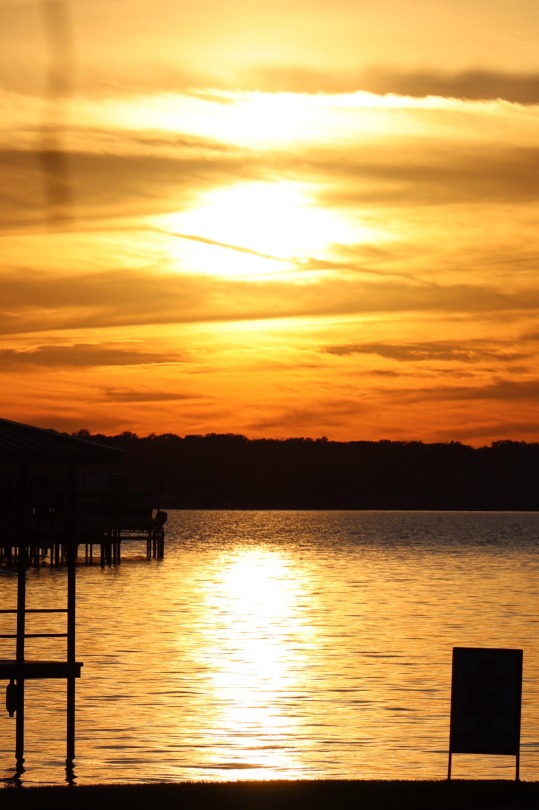
Sunset at Cedar Creek Lake - Gun Barrel City Texas - December 2 2023
#sunset#sun#reflection#lake#clouds#red#orange#nature#Cedar Creek Reservoir#Cedar Creek Lake#Gun Barrel City Texas#my photography#photographers on tumblr#photography
1 note
·
View note
Text
I haven't seen dancing pumpkin guy ONCE this year, are you guys okay?
306K notes
·
View notes
Text
My dear lgbt+ kids,
“Study proves: Most lesbians are secretly mermaids (Source)”
Here are eight steps how to fact-check a post on social media:
1. Trust your gut. Does it sound real - or like a joke? Like satire? Does it sound like something that should be all over the news (but you only saw it on social media)? Is it inflammatory and portrays a certain group of people in a overly positive or negative way?
Our example: This goes against my gut feeling. As far as we know, mermaids are not real. Major news outlets would surely report on that if we found out they are real - but this is the first and only place I heard about it.
2. Check if there’s a source.
3. If not: Google it. If it’s real, you’ll find more info on it on other websites!
Our example: There is a source but I quickly did this anyway: Google shows me a few mermaid lesbian art pieces - no studies or news reports. It seems like this “fact” only exists in a single social media post - that’s a red flag!
4. If yes: Check out the source! Does it link to a credible website? (google the website name if you’re not sure - it could be a satire/fake news/extreme-right-wing website even if it looks “legit” at first glance). Is it outdated? Does it even have anything to do with the claim?
Our example: Check for yourself - those are cute puppies but they prove nothing. Seems like the source was included to mislead us - or for purely humorous purposes.
5. Check the writer. You may find out that they are a satire writer/humorist - or that they don’t even exist. If applicable, also google the people/organisations mentioned.
Our example: The claim seems to have originated on a random lgbt+ blog by someone called “Tumblr Dad” - not with any credibile scientist or journalist who has access to the results of a scientific study.
6. A hard step: Check your biases! Do you strongly want to believe this claim is true - because it confirms the beliefs you already have? Or the flipside: Do you want to believe it’s fake - because that would confirm beliefs you already have? Could “False Authority” play a role here (you like them, so you believe they’re always right)?
Our example: I think mermaids are cool and lesbians are great - this could influence how I think about it. Plus, I usually like this Tumblr Dad dude. I may be biased!
Let’s combine the puzzle pieces: It sounds like it could be a joke, the source leads nowhere and we found nothing on any other website. It originated on a random blog. So, a funny lgbt+-related claim for a lgbt+ audience - we can safely conclude that this was a joke! Good thing we fact-checked that, so we don’t accidentally spread it as if it was a real news story.
With all my love,
Your Tumblr Dad
PS: Oh my, those were only six steps - you really can’t trust bloggers to get all the facts right.
811 notes
·
View notes
Text
OK Tumblr Geriatric Ward, let’s talk about your posture-
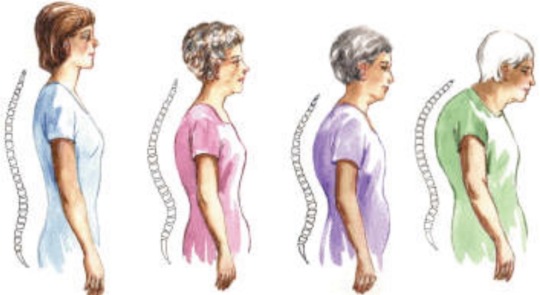
there are things you should be doing now to prevent yourself from starting to look like 🥀
Why does it matter? Future you would like to avoid the pain, limited motion, and fall risk that goes along with worsening posture.
What’s the focus?
1. Keep the flexibility in your spine
2. Stretch the muscles in the front
3. Strengthen the muscle in the back
Here are some simple things you can do daily while sitting and when you get up to go into the bathroom or the kitchen
Keep the flexibility by doing these repeated movements: 10 repetitions several times a day

The goal is to give yourself a double or triple chin. Keep your nose pointing forward, don’t let it tip up or down
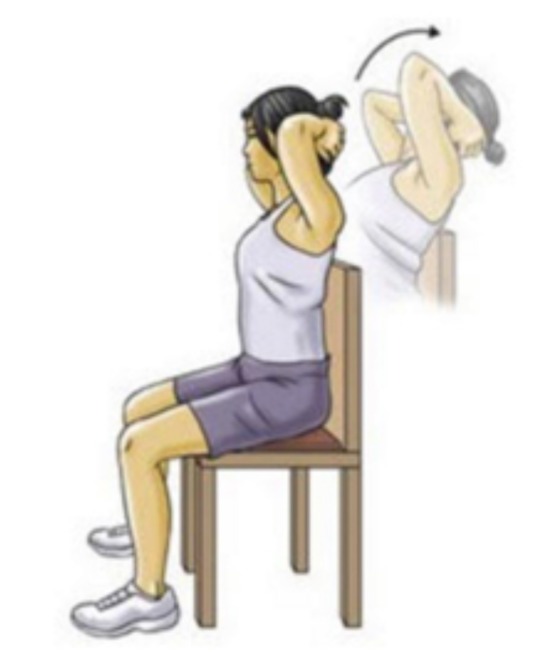
Thoracic extension- use a chair with a seat back that comes up to the level of your shoulder blades. Try to bend back over the top of the chair without arching away from the seat back and without extending your neck. If the pressure from the top of the chair is uncomfortable you can place a towel there
Stretch the muscles in the front by using a door frame. This one will feel good afterwards
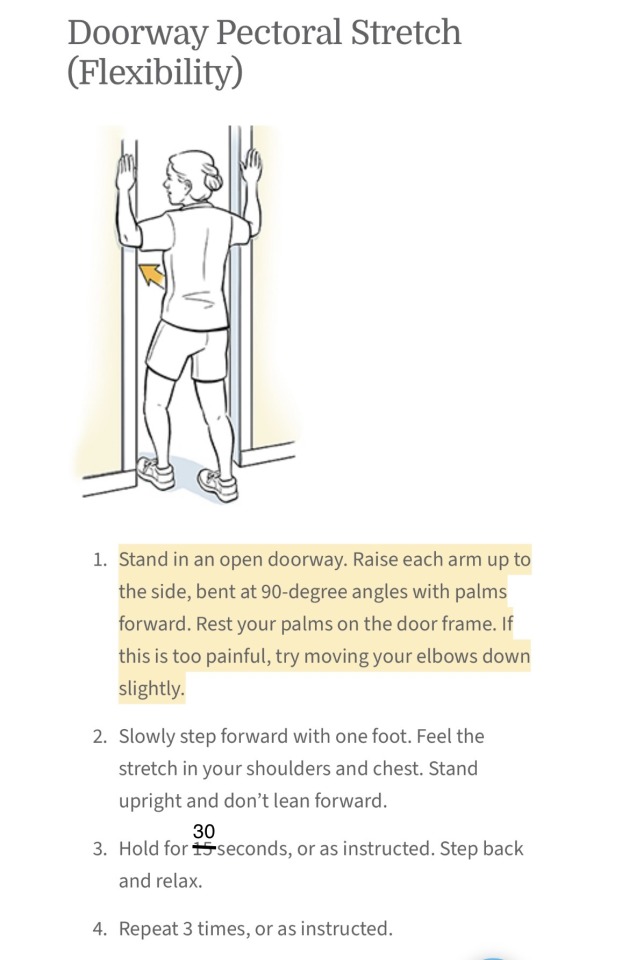
If this isn’t enough of a stretch you can do one side at a time. If you have the right arm up step forward with the right foot and turn slightly to the left. Then do it on the other side.

Strengthen the muscles in the back by squeezing your shoulder blades together for a count of 10 and then repeating 10 times. You can do this several times a day Hint: Don’t lift your shoulder blades up
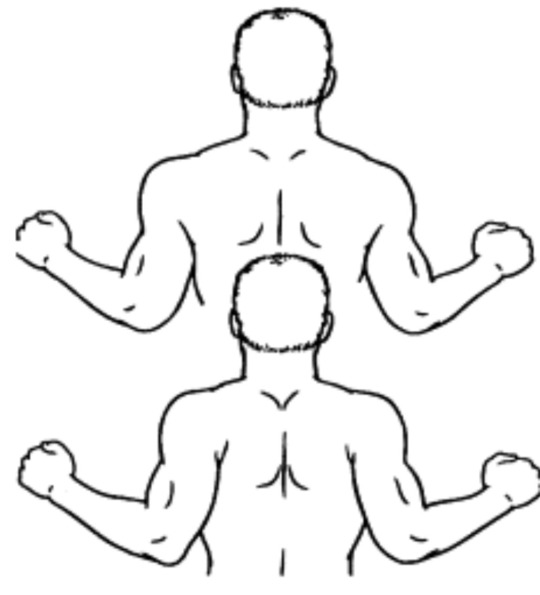
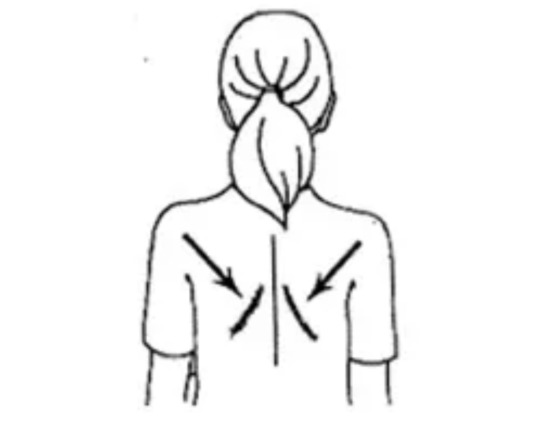
There are lots more exercises for strengthening your back muscles but this is a good starting point and easy to do. I like doing it while driving
Tips:
Do the best you can
If it hurts stop
Envision future you saying thank you each time you do one of the exercises
119K notes
·
View notes
Text
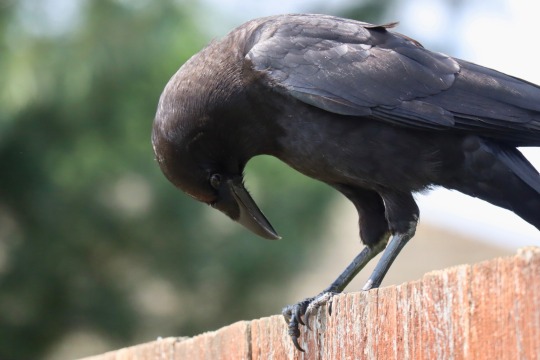
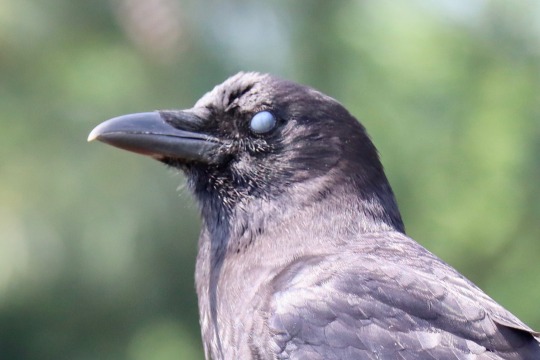
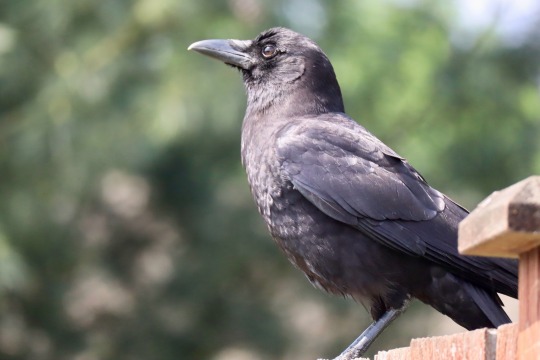
Eeyore, American Crow.
Orting Washington.
#american crow#corvid#crow#bird#birding#bird watching#washington state#my photography#photographers on tumblr#herbs#photography#nature#nature photography
17 notes
·
View notes
Text
I finally got a video of my favorite crow Eeyore (named because it’s always alone(lonely) and it make this weird noise.
Anyone know what that sound is or means, if anything. I suspect it’s imitating something, but I don’t know what.
#crow#corvid#big black bird#eeyore#washington state#nature#talking crow#american crow#my photography
2 notes
·
View notes
Text
against the logic of the lawn
Imagine a box.
This box is sealed with tape or adhesive, which shows you that it has never been opened or re-used. It is in pristine condition. Apart from that, the box could hold anything. It could contain a Star Wars Funko Pop, a printer, a shirt ordered from some sketchy online vendor, a knockoff store-brand cereal, six individually wrapped protein bars.
As a Consumer ("the" Consumer) this is your fundamental right: To purchase a box that is, presumably, identical to every other box like it.
When you Buy Product, it arrives in a box, entire of itself and without context. It has not changed since its creation. If and when Product does change—whether it is broken, spoiled, used up, or eaten—you can Buy Product that is identical in every meaningful way to the original.
It's okay if this doesn't make sense yet. (You can stop imagining the box now.)
Imagine instead a suburban housing development, somewhere in the USA.
Imagine row on row of pristine, newly built houses, each constructed with small, meaningless variations in their aesthetic, all with beige or white vinyl siding and perhaps some decorative brick, all situated on identical rectangles of land covered with freshly unrolled sod. This is the Product that every consumer aspires to Buy.
I am not exactly—qualified, or entitled, to speak on the politics of land ownership in this country. My ancestors benefited directly from the genocide of Native Americans, which allowed Europeans to steal the land they lived on, which is where a lot of wealth comes from in the end, even today. However, I have eyes in my head to see that the act of colonizing a continent, and an economic system that formed as a supporting infrastructure to colonization, have embedded something almost irreparably dysfunctional into the dominant American culture's relationship to land.
This dysfunctional Thing, this Sickness, leads us to consider land to be a Product, and to consider a human upon the land to be a Consumer.
From this point of view, land is either locked into this relationship of control and "use" to varying extents, or it is free of human influence. People trying to reason about how to preserve Earth's biosphere, working within this framework without realizing, decide that we must "set aside" large areas of land for "nature."
This is a naive and, I would reckon, probably itself colonialist way of seeing things. It appears to be well-validated by evidence. Where human population is largest, there is less biodiversity.
But I find the broad conclusions to be strikingly unscientific. The plan of "setting aside part of Earth for nature" displays little curiosity about the mechanisms by which human presence impacts biodiversity. Otherwise intelligent people, perhaps caught up in the "bargaining" phase of climate grief, seem taken in by the idea that the human species gives off a magical anti-biodiversity force field, as if feeling guiltier will fix the problems.
(Never mind that lands managed by indigenous folk actually have MORE biodiversity...almost like our species' relationship to the planet isn't inherently exploitative, but rather, the capitalist and colonialist powers destroying everything.......)
Let's go back to the image of the new housing development. This image could be just about anywhere in the USA, because the American suburban home is made for universal interchangeability, where each little house and yard is static and replaceable with any other.
Others have written about the generic-ification of the interiors of homes, how houses are decorated with the most soul-killing, colorless furnishings to make them into Products more effectively. (I think @mcmansionhell wrote about it.)
This, likewise, is the Earth turned into a Product—razed down into something with no pre-existing context, history, or responsibility. Identical parcels of land, identical houses, where once there was a unique and diverse distribution of life. The American lawn, the American garden, the industry that promotes these aesthetics, is the environmental version of that ghastly, ugly "minimalism" infecting the interiors of homes.
The extremely neat, sparse, manicured look that is so totally inescapable in American yards originated from the estates of European aristocracy, which displayed the owner's wealth by flaunting an abundance of land that was both heavily managed and useless. People defend the lawn on the basis that grass tolerates being walked upon and is good for children to play, but to say this is *the* purpose of a lawn is bullshit—children are far more interested in trees, creeks, sticks, weeds, flowers, and mud than Grass Surface, many people with lawns do not have children, and most people spend more time mowing their lawn than they do doing literally anything else outside. How often do you see Americans outside in their yards doing anything except mowing?
What is there to do, anyway? Why would you want to go outside with nothing but the sun beating down on you and the noise of your neighbors' lawn mowers? American culture tries to make mowing "manly" and emphasizes that it is somehow fulfilling in of itself. Mowing the lawn is something Men enjoy doing—almost a sort of leisure activity.
I don't have something against wanting a usable outdoor area that is good for outdoor activities, I do, however, have something against the idea that a lawn is good for outdoor activities. Parents have been bitching for decades about how impossible it is to drag kids outdoors, and there have been a million PSAs about how children need to be outside playing instead of spending their lives on video games. Meanwhile, at the place I work, every kid is ECSTATIC and vibrating with enthusiasm to be in the woods surrounded by trees, sticks, leaves, and mud.
The literal, straightforward historical answer to the lawn is that the American lawn exists to get Americans to spend money on chemicals. The modern lawn ideal was invented to sell a surplus of fertilizer created after WW2 chemical plants that had been used to make explosives were repurposed to produce fertilizer. Now you know! The more analytical, sociological answer is that the purpose of the lawn is to distance you from the lower class. A less strictly maintained space lowers property values, it looks shabby and unkempt, it reflects badly on the neighborhood, it makes you look like a "redneck." And so on. The largest, most lavish McMansions in my area all have the emptiest, most desolate yards, and the lush gardens all belong to tiny, run-down houses.
But the answer that really cuts to the core of it, I think, is that lawns are a technology for making land into a Product for consumers. (This coexists with the above answers.) Turfgrass is a perfectly generic blank slate onto which anything can be projected. It is emptiness. It is stasis.
I worry about the flattening of our imaginations. Illustrations in books generally cover the ground outdoors in a uniform layer of green, sometimes with strokes suggesting individual blades of grass if they want to get fancy. Video games do this. Animated shows and movies do this.
Short, carpet-like turfgrass as the Universal Outdoor Surface is so ubiquitous and intuitive that any alternative is bizarre, socially unacceptable, and for many, completely unimaginable. When I am a passenger in a car, what horrifies me the most to see out the window is not only the turfgrass lawns of individuals, but rather, the turfgrass Surface that the entire inhabited landscape has been rendered into—vacant stretches of land surrounding businesses and churches, separating parking lots, bordering Wal-Marts, apartment complexes, and roadsides.
These spaces are not used, they are almost never walked upon. They do nothing. They are maintained, ceaselessly, by gas-powered machines that are far, far more carbon-emitting than cars per hour of use, emitting in one hour the same amount of pollution as a 500-mile drive. It is an endless effort to keep the land in the same state, never mind that it's a shitty, useless state.
Nature is dynamic. Biodiversity is dynamic. From a business point of view, the lawn care industry has found a brilliant scheme to milk limitless money from people, since trying to put a stop to the dynamism and constant change of nature is a Sisyphean situation, and nature responds with increasingly aggressive and rapid change as disturbance gets more intense.
On r/lawncare, a man posted despairingly that he had spent over $1500 tearing out every inch of sod in his yard, only for the exact same weeds to return. That subreddit strikes horror in my heart that I cannot describe, and the more I learn about ecology, the more terrible it gets. It was common practice for people in r/lawncare to advise others to soak their entire yard in Roundup to kill all plant life and start over from a "blank slate."
Before giving up, I tried to explain over and over that it was 100% impossible to get a "blank slate." Weeds typically spread by wind and their seeds can persist for DECADES in the soil seed bank, waiting for a disastrous event to trigger them to sprout. They will always come back. It's their job.
It was impossible for those guys to understand that they were inherently not just constructing a lawn from scratch, and were contending with another power or entity (Nature) with its own interests.
The logic of the lawn also extends into our gardens. We are encouraged to see the dynamism of nature as something that acts against our interests (and thus requires Buy Product) so much, that we think any unexpected change in our yard is bad. People are sometimes baffled when I see a random plant popping up among my flowers as potentially a good thing.
"That's a weed!" Maybe! Nonetheless, it has a purpose. I don't know who this stranger is, so I would be a fool to kill it!
A good caretaker knows that the place they care for will change on its own, and that this is GOOD and brings blessings or at least messages. I didn't have to buy goldenrod plants—they came by themselves! Several of our trees arrived on their own. The logic that sees all "weeds" as an enemy to be destroyed without even identifying ignores the wisdom of nature's processes.
The other day at work, the ecologist took me to see pink lady's slipper orchids. The forest there was razed and logged about a hundred years ago, and it got into my head to ask how the orchids returned. He only shrugged. "Who knows?"
Garden centers put plants out for sale when they are blooming. People buy trees from Fast Growing Trees dot com. The quick, final results that are standard with Buy Product, which are so completely opposite the constant slow chaos of nature, have become so standard in the gardening world that the hideous black mulch sold at garden centers is severed from the very purpose of mulch, and instead serves to visually emphasize small, lonely plants against its dark background. (For the record, once your plants mature, you should not be able to SEE the mulch.)
Landscapers regularly place shrubs, bushes, trees and flowers in places where they have no room to reach maturity. It's standard—landscapers seem to plan with the expectation that everything will be ripped out within 5-10 years. The average person has no clue how big trees and bushes get because their entire surroundings, which are made of living things (which do in fact feel and communicate) are treated as disposable.
Because in ten years, this building won't be an orthodontists' office, in ten years, this old lady will be dead, in ten years, the kids will have grown, and capitalism is incapable of preparing for a future, only for the next buyer.
The logic of the lawn is that gardens and ecosystems that take time to build are not to be valued, because a lush, biodiverse garden is not easily sold, easily bought, easily maintained, easily owned, or easily treated with indifference. An ecosystem requires wisdom from the caretaker. That runs contrary to the Consumer identity.
And it's this disposable-ness, this indifference, that I am ultimately so strongly against, not grass, or low turf that you can step on.
What if we saw buying land as implying a responsibility to be its caretaker? To respect the inhabitants, whether or not we are personally pleased by them or think they look pretty? What creature could deserve to be killed just because it didn't make a person happy?
But the Consumer identity gives you something else...a sense of entitlement. "This is MY yard, and that possum doesn't get to live there." "This is MY yard, and I don't want bugs in it." "This is MY yard, and I can kill the spiders if I want to."
Meanwhile there is no responsibility to build the soil up for the next gardener. No responsibility to plant oaks that will grow mighty and life-giving. No responsibility to plant fruit-producing trees, brambles, and bushes. None of these things, any of which could have fulfilled a responsibility to the future. Rather, just to do whatever you damn well please, and leave those that come after with depleted, compacted soil and the aftermath of years of constant damage. It took my Meadow ten years to recover from being the garden patch of the guy that lived here before us. Who knows what he did to it.
The loss of topsoil in all our farmland is a bigger example, and explains how this is directly connected to colonialism. The Dust Bowl, the unsustainable farming practices that followed, the disappearance of the lush fertile prairie topsoil because of greed and colonizer mindset, and simple refusal to learn from what could be observed in nature. The colonizing peoples envisioned the continent as an "Empty" place, a Blank Slate that could be used and exploited however.
THAT is what's killing the planet, this idea that the planet is to be used and abused and bought and sold, that the power given by wealth gives you entitlement to do whatever you want. That "Land" is just another Product, and our strategies for taking care of Earth should be whatever causes the most Buy Product.
It's like I always write..."You are not a consumer! You are a caretaker!"
2K notes
·
View notes
Text
How do I explain to you people that interracial relationships are okay
Not every white person dating a POC is fetishizing. White people can be respectful and responsible when it comes to culture and relationships and not everyone has bad intentions.
Asian people can date Black people without you saying shit like “your kids will be so pretty” they’re not dating for pretty kids. They’re dating bc they like each other.
Someone can dress their partner in clothing from their culture if they want. Someone can take their partner to cultural events if they want.
People in relationships can share cultures, experiences and love without it being toxic or skin deep.
Their partner isn’t culturally appropriating. Their partner is being shown the ultimate form of love, bc their partner trusts them and loves them enough to share their history and heritage.
Yeah, dating someone from your culture is nice bc you automatically have similar experiences. But you’re not limited to dating people with the same experiences. Loving someone is sharing and growing and being together.
Interracial relationships aren’t always toxic, and some of y’all need to stop projecting onto other people.
157K notes
·
View notes
Text

Lichens in Sunlight
#lichen#fungus#moss#allege#washington state#my photography#nature#photography#photographers on tumblr#herbs#herbalism
6 notes
·
View notes
